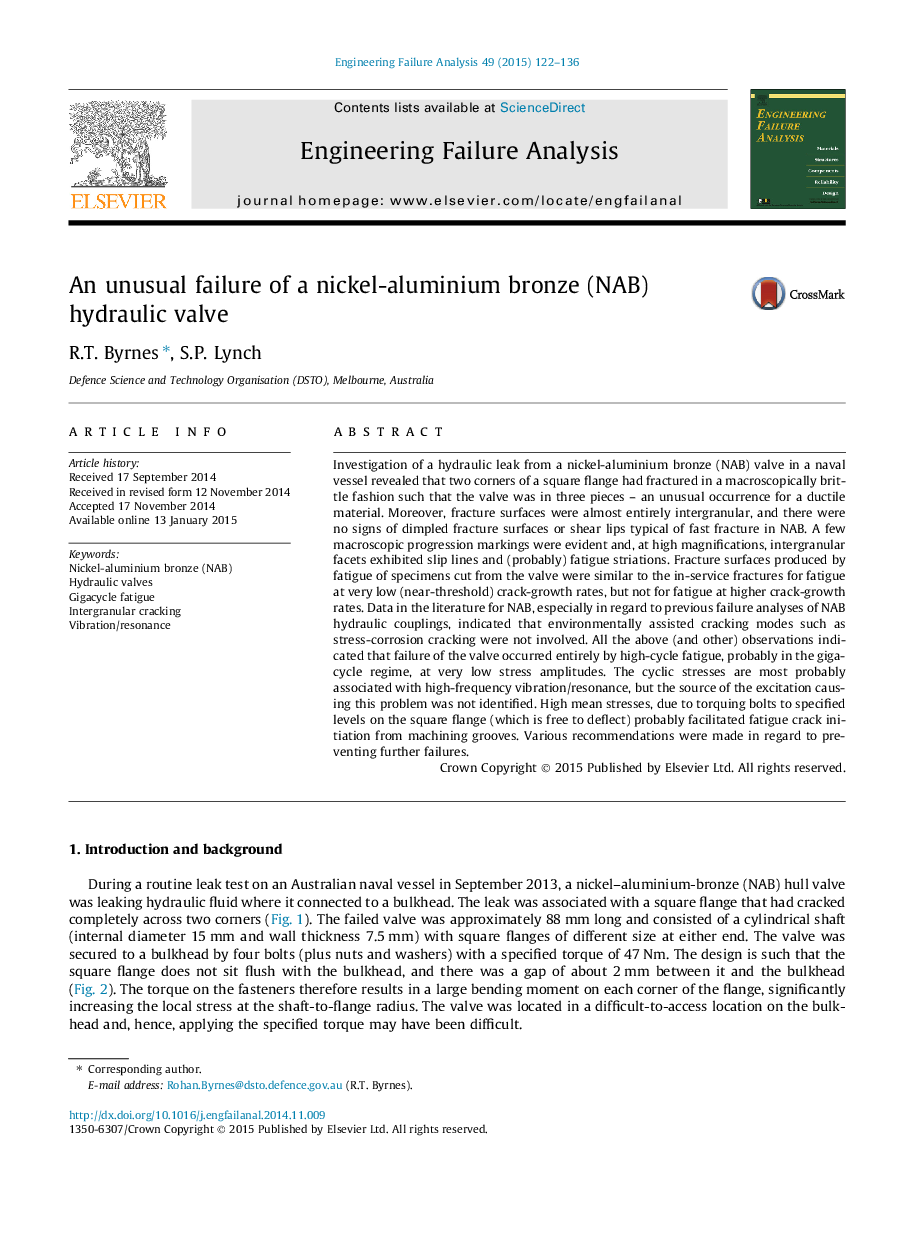| کد مقاله | کد نشریه | سال انتشار | مقاله انگلیسی | نسخه تمام متن |
|---|---|---|---|---|
| 769430 | 1462976 | 2015 | 15 صفحه PDF | دانلود رایگان |

• Macroscopically brittle failure with intergranular fracture surfaces.
• Slip lines and possibly fatigue striations on intergranular facets.
• Features reproduced in laboratory testing with decreasing cyclic stress amplitudes.
• Fatigue failure in the gigahertz regime at near-threshold ΔK at high mean stresses.
• Cause attributed to vibration/resonance, but the source was not established.
Investigation of a hydraulic leak from a nickel-aluminium bronze (NAB) valve in a naval vessel revealed that two corners of a square flange had fractured in a macroscopically brittle fashion such that the valve was in three pieces – an unusual occurrence for a ductile material. Moreover, fracture surfaces were almost entirely intergranular, and there were no signs of dimpled fracture surfaces or shear lips typical of fast fracture in NAB. A few macroscopic progression markings were evident and, at high magnifications, intergranular facets exhibited slip lines and (probably) fatigue striations. Fracture surfaces produced by fatigue of specimens cut from the valve were similar to the in-service fractures for fatigue at very low (near-threshold) crack-growth rates, but not for fatigue at higher crack-growth rates. Data in the literature for NAB, especially in regard to previous failure analyses of NAB hydraulic couplings, indicated that environmentally assisted cracking modes such as stress-corrosion cracking were not involved. All the above (and other) observations indicated that failure of the valve occurred entirely by high-cycle fatigue, probably in the gigacycle regime, at very low stress amplitudes. The cyclic stresses are most probably associated with high-frequency vibration/resonance, but the source of the excitation causing this problem was not identified. High mean stresses, due to torquing bolts to specified levels on the square flange (which is free to deflect) probably facilitated fatigue crack initiation from machining grooves. Various recommendations were made in regard to preventing further failures.
Journal: Engineering Failure Analysis - Volume 49, March 2015, Pages 122–136